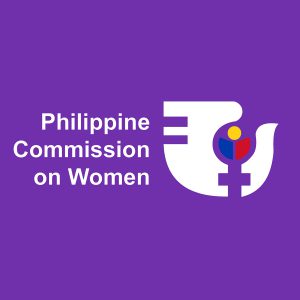Increasing and Harmonizing Maternity Leave for those in the Government
and Private Sectors
POLICY BRIEF NO. 2
This policy brief provides the rationale for increasing and harmonizing the maternity leave for both the government and private sector employees.
WHAT IS THE ISSUE? WHAT HAS BEEN OUR RECENT EXPERIENCE/S WITH REGARDS TO THE ISSUE?
Women in the labor force, after giving birth, always have to consider returning to work immediately for fear of losing their jobs, or resigning from work to prioritize taking care of their babies. As workers, they are expected to perform both in the productive and reproductive domains. In this regard, maternity leave is a crucial labor and social issue that needs to be addressed as it concerns the welfare of both women and their newborns. Currently, the law provides 60 days maternity leave for women employees both in government and private sectors for normal delivery, and 78 days in case of Caesarian section, but only for those in the private sector. There is, therefore, a need to harmonize the policies governing the private and government sectors. Another issue is discrimination against unmarried pregnant women who are denied maternity leave benefit under Commonwealth Act No. 647, otherwise known as “An Act to Grant Maternity Leave to Married Women Who are in the Service of the Government or Any of Its Instrumentalities”. Although in 2002, the Civil Service Commission (CSC) through Resolution No. 021420 already grants maternity leave for unmarried pregnant government employees, there is still a need to amend the law because a CSC issuance cannot overturn a law and does not cover those in the private sector. It is also important to protect women’s employment during pregnancy, maternity leave and during a given period following their return to work.1 There is a need to ensure that maternity will not be a source of discrimination in employment.
WHY IS THE ISSUE IMPORTANT?
Unwed mothers are often faced with the burden of raising the child on their own.2 That is why regardless of marital status, the International Labour Organization (ILO) highlights paid maternity leave as the core element of the health and economic protection of working women. Access to such benefits should be granted to all women, without discriminating against unwed mothers. Increased maternity leave enables women to balance fulfillment of their maternal functions and the performance of their work responsibilities. A longer period of maternity leave will also give women sufficient time to rest, recuperate and regain their full health. It provides an opportunity for every woman to exclusively breastfeed her baby for a longer period and develops mother-infant bonding. Maternity leave is important in ensuring that babies are breastfed exclusively from the minute they are born onwards.3 Exclusive breastfeeding for six months improves a child’s chance of survival, as well as optimal growth and development. Without the nutritional foundation of exclusive breastfeeding, babies are more vulnerable to diarrhea and respiratory infections, as well as long-term health problems like diabetes and cardiovascular disease. Exclusive breastfeeding for six months, appropriate complementary feeding and sustained breastfeeding for up to two years can prevent over 75 percent of deaths in early infancy and 37 percent of deaths in the second year.4 Given that breastfed infants have fewer illnesses, it will result to fewer days of missed work to care for sick children.5 In the end, employers will benefit from reduced employee turnover and absenteeism. Thus, a stronger maternity leave policies will create a more stable and loyal workforce.
WHAT ARE THE EXISTING LAWS OR POLICIES RELATED TO THE ISSUE?
The Convention on the Elimination of All Forms of Discrimination Against Against Women (CEDAW) Article 11 (2) specifies that “In order to prevent discrimination against women on the grounds of marriage or maternity and to ensure their effective right to work, State Parties shall take appropriate measures:
a) To prohibit, subject to the imposition of sanctions, dismissal on the grounds of pregnancy or of maternity leave and discrimination on the basis of marital status
b) To introduce maternity leave with pay or with comparable social benefits without loss of former employment, seniority or social allowances;
c) To encourage the provision of the necessary supporting social services to enable parents to combine family obligations with work responsibilities and participation in public life,in particular through promoting the establishment and development of a network of child-care facilities;
d) To provide special protection to women during pregnancy in types of work proved to be harmful to them.” In addition, Article 11 (3) mentions that protective legislation relating to maternity shall be reviewed periodically in the light of scientific and technological knowledge and shall be revised, repealed or extended, as necessary.
The International Labour Organization (ILO) Convention 183 Article 4(1) states that women shall be entitled to a maternity leave of not less than 14 weeks. Furthermore, Article 8(1) provides that it is unlawful for an employee to terminate employment of a woman during pregnancy and prohibits dismissal on grounds related to pregnancy or birth of a child and its consequences, or nursing. In terms of cost of maternity cash benefits, an ILO study reveals that the cost of financing maternity protection is lower in comparison to the other branches of the social security.6
The study further shows that in most contexts, it is possible to finance a social insurance scheme providing maternity cash benefits for less than 0.7 percent of covered wages.7 Based on the ILO calculations a minimum package of social security is affordable and feasible even in the poorest countries.8
The ILO standards on maternity protection call for (1) the protection of women’s employment during maternity leave and during a given period following employees must be protected from dismissal in a certain prescribed time after she returned to work.
The Magna Carta of Women (MCW) or R.A. 9710 provides for the protection of women against discrimination on the basis of marital status. Likewise, Section 13, Rule XVI of the CSC Omnibus Rules on Leaves Implementing Book V of Executive Order 292 which provides that “(e)very woman, married or unmarried, may be granted maternity leave more than once a year.” Moreover, Republic Act Nos. 7600 or “The Rooming-In and Breast-feeding Act of 1992” and 10028 or the“Expanded Breastfeeding Promotion Act of 2009” encourage mothers to breastfeed their babies.
WHAT ARE THE EXPERIENCES OF OTHER COUNTRIES IN ADDRESSING THE ISSUE?
Among Asian countries, Brunei Darussalam, Hong Kong (China), Malaysia, Nepal and Papua New Guinea provide fewer than twelve weeks of maternity leave while Vietnam (six months), Mongolia (17 weeks), Bangladesh (16 weeks), Singapore (16 weeks) and China (14 weeks) provide 14 weeks or more. In Norway, breastfeeding rate increased from 10 to 80 percent when they increased paid maternity leave from 10 to 40 weeks.9 According to the Maternity Protection Coalition, exclusive breastfeeding leads to healthier children and reduces the amount of time and money that the health systems spend each year addressing illnesses caused by poor infant and child feeding.10 In the U.S., a 2007 study reported that if 90 percent of babies were exclusively breastfed for the first six months, it could save the country USD $13 billion each year in medical costs for infant illnesses and avoid 911 infant deaths.11 In Viet Nam, a study showed that each year, approximately VND 208,300,000,000 (US$ 9,340,172) is spent on illnesses caused by poor infant and child feeding practices – this substantial amount of money could be saved and utilized for other prioritized medical treatment.12 This will be possible if infant and child feeding will be improved, specifically breastfeeding practices among mothers.
WHAT ARE THE CONSIDERATIONS IN ADDRESSING THIS ISSUE IN THE COUNTRY?
Promoting women’s rights and gender equality Allowing a woman to fully recuperate, regain her full strength and perform her duties as mother to her newborn child recognizes her unique reproductive function, acknowledges her role in the labor force and fulfills her rights. Responding to International Commitments Increasing the maternity leave benefits is compliant with the Philippine Government’s State Obligation under the CEDAW, particularly Article 13, which mandates State Parties to “take all appropriate measures to eliminate discrimination against women in other areas of economic and social life… in particular: a) the right to family benefits…” POLICY RECOMMENDATION The Philippine Commission on Women (PCW) recommends the enactment of a law that provides:
- equal maternity leave benefits for employed women regardless of employment status in both the government and private sectors;
- one hundred (100) days (or 14 weeks) paid maternity leave, with optional additional 30 days leave without pay; and
- security of tenure to all women employees availing of the maternity leave.
Moreover, PCW suggests that the Social Security System (SSS) and concerned agencies look into the following recommended actions for possible fund source of maternity benefits in the private sector:
- An independent audit review of SSS’ existing funds and fund life of the whole social insurance system. This should include fund contributions and actual/projected allotment to specific social services. This should give stakeholders a clearer picture of the agency’s viability to accommodate the proposed additional maternity benefits;
- In case available funds cannot fully cover the proposed additional benefits, the SSS may want to explore implementing the following to be able to grant the proposed maternity benefits:
- reinforce strict and effective contribution collection;
- increase the contribution share of employers and employees specifically for maternity leave,
- utilize portion of sin tax revenue;
- combine any of the above-mentioned schemes.
CONCLUSION
Women’s overall health is important to a nation’s overall quality of life as they are childbearers and the typical family caretakers. Women’s well-being has direct impact on child survival, health and nutrition; therefore, supporting their role and welfare through increasing maternity leave benefits should be given appropriate consideration. In the previous congress, legislative proposals to increase the maternity leave benefits were tackled but remained pending because the source of funds for the maternity benefits of women working in the private sector remained a boulder for its passage. We hope that in this Congress, the issue will be addressed and that legislators will prioritize the measures to increase maternity leave benefits.
ENDNOTES
1 Laura Addati et al., Maternity and Paternity at Work – Law and practice across the world (ILO, 2014) p.732 “Socio-Emotional Problems of Unwed Mothers”, Orissa Review, December 20113
2 Retrieved here.
3 Maternity Leave for Asia Pacific, April 20134 United Nations Children’s Fund (UNICEF), Infant and Young Child Feeding Programme Review CaseStudy: The Philippines. New York: UNICEF, 20095 Maternity Leave for Asia Pacific, April 2013.6 Laura Addati et al., Maternity and Paternity… p.337 Ibid. p. 338 Ibid. p. 339 Maternity Leave Boosts Breastfeeding, Maternity Protection Coalition Press Release ( 05 June 2000), The Burden of Suboptimal Breastfeeding in the United States: A Pediatric Cost Analysis (April 5, 2010), A Strong Maternity Leave: A Strong Investment in Viet Nam’s Future (February 2012)
DOWNLOAD a copy.

